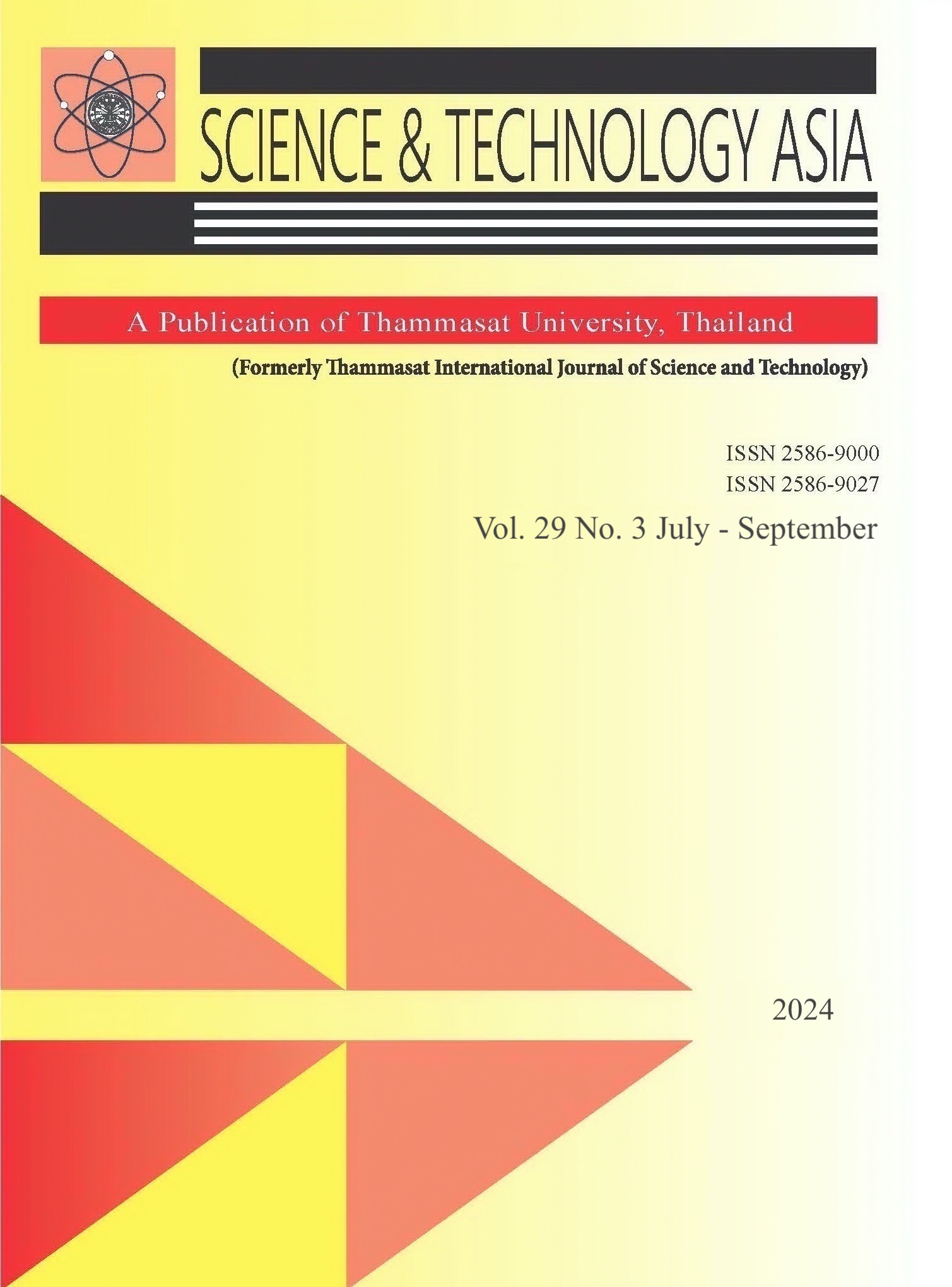Rainfall Data Assessment from X-Band Polarimetric Radar for Small Drainage Area
Main Article Content
Abstract
For disaster monitoring and mitigation, an X-Band polarimetric radar can provide one or two minutes of rainfall data in small areas. However, this weather radar is not available in tropical nations such as Malaysia, which has suffered from flash floods and flooding, particularly during the monsoon season. As a result, this study evaluates rainfall estimation strategies for small drainage regions as part of a proposal for a new framework of rainfall estimation in Malaysia that employs X-Band polarimetric radar. It begins with raw data conversion, then clips the DEM, selects the drainage area in Kagoshima, and finally plots the hyetograph for rainfall events. The extraction of X-Band polarimetric rainfall data from AMeDAS ground data was investigated. The statistical validation results reveal a relatively positive association between X-Band polarimetry and AMeDAS, with an R2 value of around 24% for model fit. Furthermore, using QGIS to compare rainfall distribution results for both data sets reveals that AMeDAS data does not accurately reflect actual rainfall monitored by XBand polarimetric radar because there are no AMeDAS stations in the drainage area, and the X-Band polarimetric radar distribution image is also real-time. All drainages were classified as heavy rain in the upper stream, indicating the precise location of the highest intensity and the possibility that the area closest to the drainage would experience a disaster such as a flood. This paper concludes with suggestions for future works.
Article Details

This work is licensed under a Creative Commons Attribution-NonCommercial-NoDerivatives 4.0 International License.
References
NIED, Rainfall Observation by X-Band Multi- Parameter Radar, National Research Institute for Earth Science and Disaster Prevention, Ibaraki, Japan, 2005.
M. Syarifuddin, R. I. Hapsari, D. Legono, S. Oishi, H. G. Mawanda, N. Aisyah, M. Shimomura, H. Nakamichi, and M. Iguchi, "Monitoring the Rainfall Intensity At Two Active Volcanoes In Indonesia And Japan By Small-Compact X-Band Radars."
R. I. Hapsari, S. Oishi, and R. A. Asmara, “Application of X-Mp Radar for Debris Flow Disaster Mitigation in Merapi Volcanic Rivers Indonesia,” International Journal of Control and Automation, 2019;12(7):23-36,.
M. Maki, M. Iguchi, T. Maesaka, T. Miwa, T. Tanada, T. Kozono, T. Momotani, A. Yamaji, and I. Kakimoto, “ Preliminary Results of Weather Radar Observations of Sakurajima Volcanic Smoke,” Journal of Disaster Research, 2016;11(1):15-30.
M. Maki, K. Iwanami, R. Misumi, R. Doviak, T. Wakayama, K. Hata, and S. Watanabe, " Observation of Volcanic Ashes With a 3-Cm Polarimetric Radar."
F. S. Marzano, E. Picciotti, G. Vulpiani, and M. Montopoli, “Synthetic signatures of volcanic ash cloud particles from Xband dual- polarization radar,” IEEE transactions on geoscience and remote sensing, 2011;50(1):193-211.
M. Nishio, and M. Mori, “Analysis of Debris Flow Disaster Due to Heavy Rain by X- Band MP Radar Data ” in The International Archives of the Photogrammetry, Remote Sensing & Spatial Information Sciences Prague, Czech Republic 2016.
M. Nishio, and M. Mori, “Analysis Of Heavy Rain From Typhoon Number 3 (2017) Using X- Band Multiparameter Radar Data, Kyushu, Japan,” International Archives of the Photogrammetry, Remote Sensing & Spatial Information Sciences, vol. 42, no. 4, 2018.
Y. Yonese, A. Kawamura, H. Amaguchi, and A. Tonotsuka, “Study on the precision of 1-minute X-Band MP radar rainfall data in a small urban watershed,” International Journal of Sustainable Development and Planning, 2018;13(4):614-25.
M. N. Anagnostou, J. Kalogiros, E. N. Anagnostou, M. Tarolli, A. Papadopoulos, and M. Borga, “ Performance Evaluation of High- Resolution Rainfall Estimation By XBand Dual- Polarization Radar for Flash Flood Applications in Mountainous Basins,” Journal of Hydrology, 2010; 394(1):4-16.
V. Chandrasekar, H. Chen, and M. Maki, "Urban flash flood applications of high-resolution rainfall estimation by Xband dual-polarization radar network."
N. A. Hasan, M. Goto, and K. Miyamoto, “The web- based framework of X- band polarimetric radar system,” International Journal of Recent Technology and Engineering, 2019;8(2):4165-9.
S. Sebastianelli, F. Russo, F. Napolitano, and L. Baldini, “ On Precipitation Measurements Collected By a Weather Radar and a Rain Gauge Network,” Natural Hazards and Earth System Sciences, 2013;13(3):605-23.
H. Chen, S. Lim, V. Chandrasekar, and B. - J. Jang, “ Urban hydrological applications of dual-polarization X-band radar: Case study in Korea,” Journal of Hydrologic Engineering, vol. 22, no. 5, 2017.
K. Dirayati, “ Analisis Pengaruh Jarak Terhadap Perbandingan Hujan Radar dan Hujan Permukaan Studi Kasus: Wilayah Lereng Selatan Gunung Merapi,” Universitas Gadjah Mada, 2017.
A. Nikahd, “ Altitudes Effects in Calibration of Ground Doppler Radar for Rainfall Estimation,” Engineering Technology Open Access Journal, 2018;1(5):129-36.
S. S. Putra, B. W. Ridwan, K. Yamanoi, M. Shimomura, and D. Hadiyuwono, “ Point- Based Rainfall Intensity Information System in Mt. Merapi Area by X-Band Radar,” Journal of Disaster Research, 2019;14(1):80-9.
Q. Fajriani, R. Jayadi, D. Legono, and J. Sujono, " The Reliability of X- Band Multiparameter Radar Rainfall Estimates," IOP Conference Series: Earth and Environmental Science, 1, IOP Publishing, 2021, pp. 1-7.
N. A. Hasan, M. Goto, and K. Miyamoto, “ A review of weather radar system for rainfall induced disaster preparedness,” Int J Innov Technol Explor Eng, 2019;8(7):268-77.


